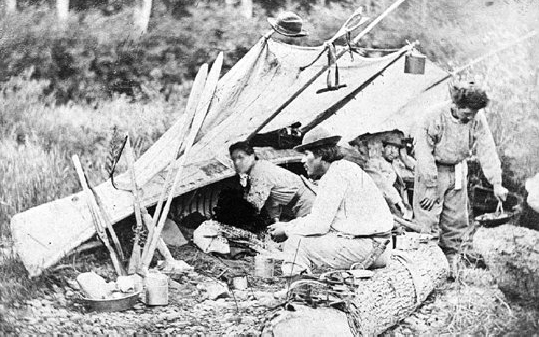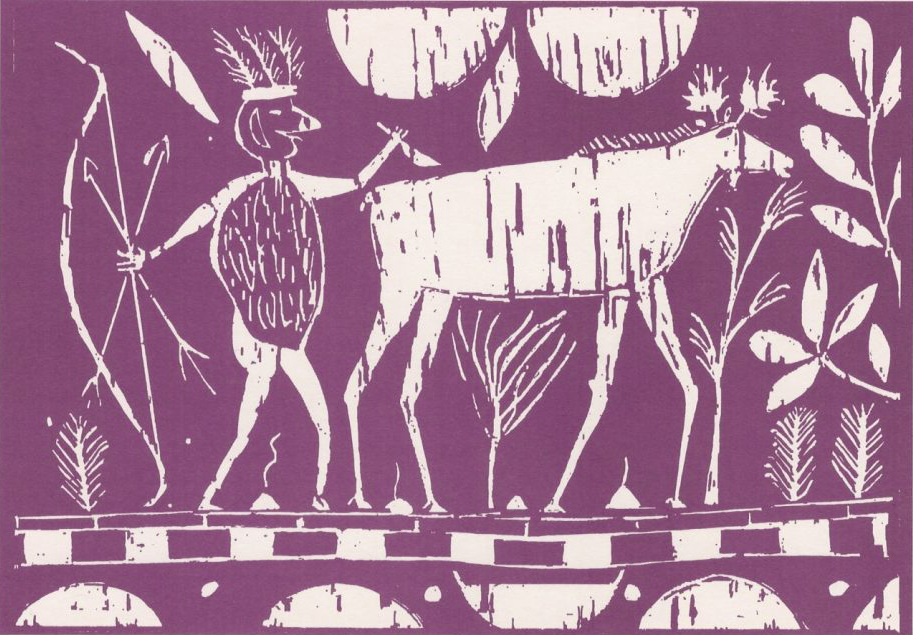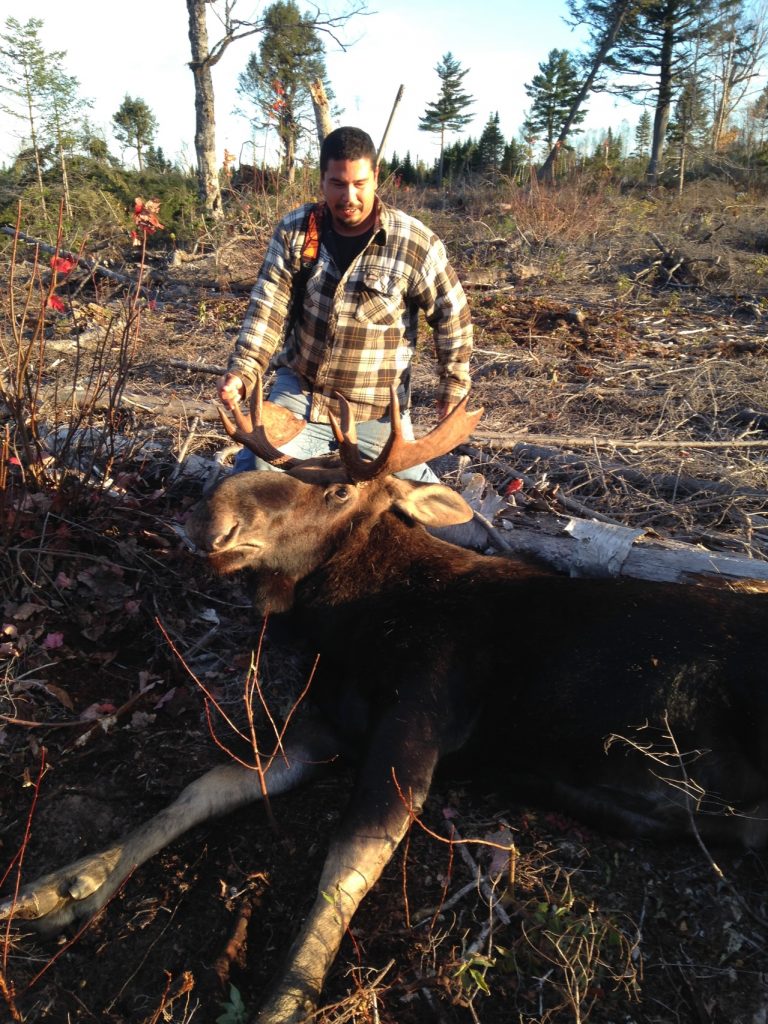Materials required: logbook, projector, whiteboard
Read the following account to your class.

When I was young, we used to hunt all the time. We used to hunt moose, bear, caribou, ducks, geese. We hunted all the time; you had to hunt until you killed something. Sometimes we went hungry but mostly we had country food all the time.
It’s hard to hunt moose. You have to follow the tracks until you find the animal. Moose are smart. You have to be careful because they watch everything, and they run away fast. I shot my first moose when I was fifteen. I didn’t know a lot about hunting, so an old man took me out in the bush. I saw some moose tracks. I was real excited because I wanted to shoot that moose. The old man ignored those tracks. He didn’t even say anything, he just kept on walking. We walked for a long time, and we found more moose tracks. The old man said there was a moose here, so we went into the bush, and we found it and I shot it. I was happy. It was a good feeling because we took it back and everyone had fresh meat. That old man knew how to hunt, and he showed me how to hunt.

Abbe Museum, Bar Harbor, Maine Copyright 1998
In those days, everyone used to travel together, and everyone would help each other. If someone killed a moose, they would share it with everybody. Today, people don’t share as much as they used to. That was important in the old days — if you had meat, you never refused to share it with anybody. If you didn’t share, then the hunting was no good. That’s why people respected a good hunter because he always shared everything.

We were trappers, too. That’s how we used to make money. We trapped beaver, lynx, muskrat, and mink. We used to take our furs to the store. We traded the money for groceries and then we would go back in the bush again.
I remember in the old days my mother used to trap. She used to set snares for rabbits. She used to walk a long way and come back with some rabbits in a bag. Sometimes she even set a trap for muskrat. I taught my granddaughter how to set a snare, and she brought me a rabbit last week.
Trapping is different from the old days. Now they only stay one or two nights when they go check their traps. In the old days we were gone a long time when we checked our traps. We travelled on snowshoes. We went really slowly when there was lots of snow. Now they got skidoos and they check their trapline in one or two days.
Some of my kids would rather go to work than go out in the bush to make a living. But it’s a good life. Even the tea tastes better in the bush.
When you finish reading this story to the students, discuss their impressions of the Elder who was speaking:
- Why is it difficult to hunt moose?
- How has trapping changed since the Elder was young?
- Do you think hunting and trapping are still important to the Elder?
- How are women involved in hunting and trapping?
- How would the people that the Elder is talking about make money?
- Think back to times before there were Europeans. Was this lifestyle the way it always was?
- Why does the Elder feel it is important to share?
- Do you believe it is important to share? Why?
- Would you describe this life as difficult? Why?
- What have you learned from this story? Can you tell a story from your family about how they used to survive?
Now have students consider how they can provide for their own family and communities. Have each student draw up a list of positive ways that they can be a valued contributor to those around them. What talents do they have that can be useful to others? What people do they know who can use a helping hand? Now set a goal of three specific ways that they can help their family or community over the next two weeks and write these down in their logbook or diary. Then collect the logbooks. In two weeks’ time, return the list to the students and have them reflect on whether or not they completed these actions and what impact they had. Why was it difficult to complete these tasks?




